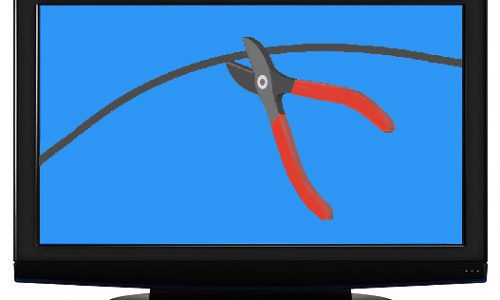
Moving Your Kitchen Sink & Installing Other Appliances
- Appliances, Interior Design
- dishwasher, fridge, kitchen, kitchen appliances, moving kitchen sink, sink, water dispenser
- October 7, 2021
How to Move a Kitchen Sink?
Contents
For those who are sick of their kitchen looking like it stepped off the set of “The Brady Bunch,” you should seriously consider a kitchen renovation. One of the most critical aspects of any kitchen makeover is the location of your kitchen plumbing. Even for the handiest householders, the prospect of cutting and re-routing pipes, soldering copper, drilling holes, and installing a sink and a dishwasher is daunting.
Because of technologies like flexible supply lines, PEX water pipe, and push-fit water pipe fittings that don’t require soldering, plumbing has become more accessible throughout the years. When remodelling a kitchen, the most challenging challenges are ensuring that the drain pipe has good pitch and finding space for the vent pipe to be moved.
Moving it the Right Way

Relocating a kitchen sink might be easy or challenging, depending on how far you’re moving it. If you’re only moving the sink a short distance, you can utilize longer faucet supplies to make up for the lost length in the drain and vent.
They are moving the sink across the room, on the other hand, maybe quite tricky. Water lines may be cut and expanded virtually anywhere, even if you have to drill a few holes. Moving the water supply may be made considerably more straightforward by using PEX pipe or push-fit fittings.
To find out more about PEX pipes and other types of piping used within the home, read our article on Popular Types of Plumbing Pipes and Their Uses!
Drain and vent pipes, on the other hand, are a very different story. When relocating a kitchen sink, the most important thing to remember is to make sure the drain has an adequate amount of pitch.
Drain pipes and vents should have a slope of at least 1/4 inch per foot. Locating a suitable location for a new vent can be a real challenge. You don’t want a vent pipe going through the centre of the kitchen if there’s a second story above it.
To keep them out of sight, remodels will route new vents via an above closet.
Do You Need a Plumber?

It’s a do-it-yourself job that even the least experienced householders can do. However, if you need to make significant adjustments to the drain and vent, you’re best off leaving it to a professional plumber.
It won’t drain well if the sink isn’t properly ventilated or if the drain has a low pitch. To fix this, you’ll have to take down your newly renovated walls, ceilings, and floors and start from scratch.
With a slab base, moving kitchen plumbing is next to impossible. It is possible to reroute water lines through walls or ceilings if you use a PEX pipe that is flexible. Due to the drain’s pitch and need to be lower than the fixture, the slab must be cut and hammered to make it work.
A plumber would most likely be needed if your property is built on a slab, and you want to renovate your kitchen.
What about installing an Island Sink?
An island sink is popular among homeowners because of its attractive appearance and adaptability. It is not difficult to connect the water and drain for an island sink.
Like those found in most ordinary sinks, the drain and water pipes rise from the bottom of the cabinet and connect to the sink and faucet. You can plumb an island sink if you can plumb a kitchen sink. The vent is the source of the majority of issues with an island sink.
A standard kitchen sink vent rises at least 6 inches above the sink before descending to the floor. Because an island sink vent cannot accomplish this, you have just two options for venting an island sink.
Install an island vent that rises and loops as high as beneath the cabinet before descending through the floor and connecting to a vertical duct. This will protect your trap from siphoning while providing oxygen to the system.
The alternative option is to install an air admittance valve (AAV), a gravity-operated valve that should be positioned as far up in the cabinet as feasible. It is a less complicated option than an island vent, but it cannot always keep up with emptying a large sink or dishwasher, resulting in sluggish drainage.
Before installing an island vent or an AAV, verify with your local code enforcement office because the requirements for each might differ from city to city.
How about Water Dispenser and Ice Maker?
Refrigerators with a filtered-water dispenser and an ice maker are popular, but they don’t produce water on their own. To feed your water dispenser and ice maker, a water line must connect to one of the cold water pipes.
This is frequently accomplished by placing a saddle valve on a cold water line closest to and most accessible to your refrigerator. Some saddle valves require a hole to be drilled in the pipe, while others are self-tapping.
Alternatively, you may use a push-on-type ice maker connection kit containing a tee and a cut off valve to connect to the cold line.
Following the installation of the valve, 1/4-inch water tubing is connected to the valve and routed up to a connector on the rear of the refrigerator. Typically, this entails drilling a tiny hole in a cabinet or the floor beneath the refrigerator.
The tube is highly flexible and can be composed of copper, polyethylene, or braided stainless steel. Because you can get all of the supplies you need in a kit, this is an excellent project for most DIYers.
Final Touch With Dishwasher and Other Kitchen Appliances

A kitchen renovation generally includes new equipment. Though the expense of new appliances may make you believe that your old ones are still functional, new appliances might save you money over time.
While most appliances are safe and straightforward to install, you should exercise caution when relocating and installing the gas supply for your stove. Because a gas leak might be dangerous, you should leave this work to the specialists.
Installing your new dishwasher’s connections isn’t nearly as complicated.
The water and the drain go through the cabinet under the sink. The water is clamped to either a dishwasher connection on the tailpiece or a similar fitting on your trash disposal.
To prevent the drain from back flowing into the dishwasher, use an air gap device or put a high loop in the drain line and attach it to the cabinet wall.
How Much Does it Cost?
Moving a kitchen might cost up to $2000 or more if the process is complicated. Plumber call-out fees can range from $60 to $100, while hourly charges can range from $100 to $150.
Now you are equipped with the knowledge on how to move and install your kitchen sink and other appliances, why not give your fireplace a makeover or look into moving your boiler!





